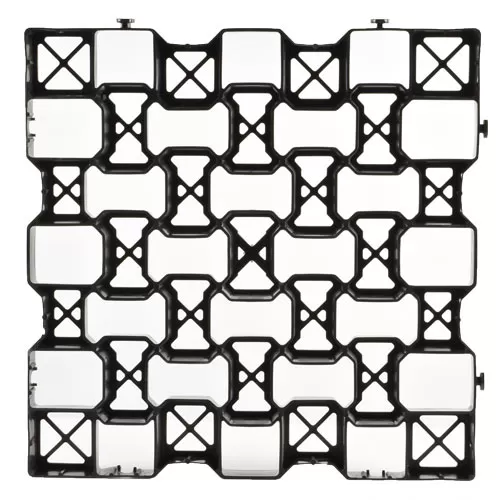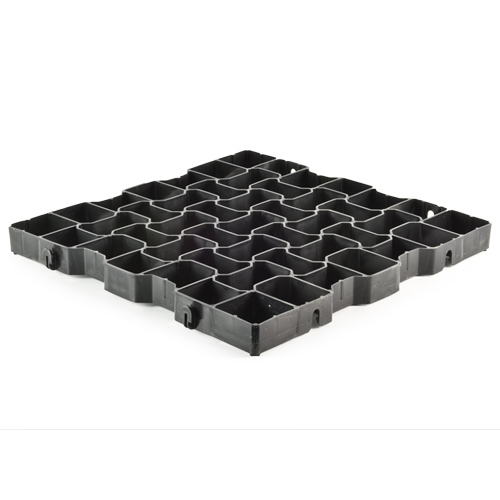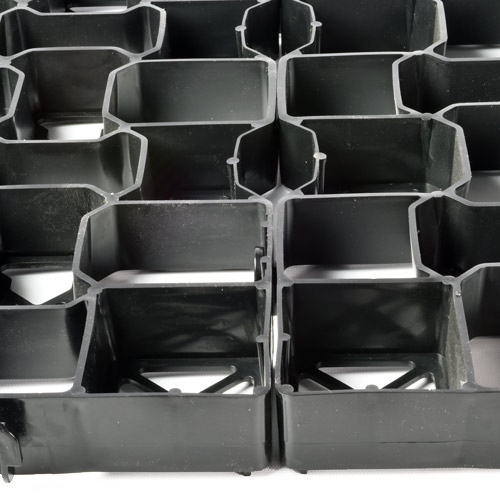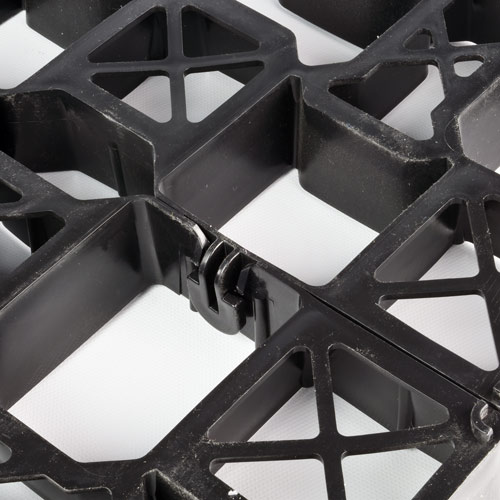What Are Grass Driveway Pavers?
Related Product: GeoGrid Cellular Paving System 4 cm x 1.6x1.6 Ft.
The grass driveway pavers will bring the ability to support the weight of vehicles, much like cement. However, they allow for a more natural look and greater permeability than asphalt or concrete, which some people prefer.
Using these pavers to create a grass driveway provides an environmentally friendly option versus laying out asphalt. For homes in rural areas or on acreages, creating a long asphalt driveway may be cost-prohibitive as well, making a natural driveway a better option.
Additionally, pavers will hold the ground together, reducing the chances of erosion. For those who want a gravel driveway in a rural area that is subject to washouts, these pavers will maintain the integrity of the soil.
How Do You Create a Natural Grass Driveway?
 To lay out the driveway, the GeoGrid Cellular Paving System tiles are the best selection. These tiles consist of an extremely tough polyethylene plastic that can withstand up to 35 tons of vehicle weight per square foot.
To lay out the driveway, the GeoGrid Cellular Paving System tiles are the best selection. These tiles consist of an extremely tough polyethylene plastic that can withstand up to 35 tons of vehicle weight per square foot.
Driving a vehicle regularly over ground that doesn’t have these tiles installed will develop ruts that collect rainwater, creating a highly uneven space. Large ruts that become muddy will eventually kill grass in the space too.
Installation of these grass driveway pavers is an easy process, as a single tile weighs only 2.4 pounds. One person can lay them out quickly.
Compare this with asphalt or concrete, where the space requires leveling and the addition of a substrate layer. Sometimes, large machinery has to do the work to create a cement driveway, but this isn’t always practical in all locations.
How Do Open Cell Tiles Work for a Driveway?
Each of the GeoGrid tiles has an open cell grid pattern. This allows the installer to fill in the open spaces with soil or gravel. It also allows the tiles to slowly sink into the soil of the driveway as vehicles go over them, creating ground that will not wash away.Installers can bury these 1-9/16-inch thick tiles at ground level. They have interlocking tabs that hold adjacent tiles together to create the larger space to secure the driveway.
Installers also can lay these tiles over the soil of the driveway, followed by filling the grid holes with earth or gravel to hold them in place.
The driveway grid tiles will hold the soil together and support the weight of the vehicles that ride over the top.
Installers can allow grass to grow naturally inside the grids, or they can plant grass to create a space that matches the surrounding lawn. The grass roots will grow naturally through the open cells of the tile, allowing them to receive nutrients and water from the soil.
What Are Some Advantages of Using Grass Driveway Pavers?
Grass driveway pavers create a driveway space that eventually matches the surrounding lawn and soil, meaning there’s no obvious edge. When the driveway has the same look as the rest of the lawn, it’s almost hidden when people visit the property.By avoiding concrete, asphalt, and stone, there’s no chance for a block to crack out, requiring the installer to remove and repair it.
Using a grass area as the driveway is visually appealing and easy to maintain. Property owners can simply run a mower over the top of the buried tile to keep the grass looking great.
They even can fertilize the area and use weed killing granules, just like they’d use on the rest of the lawn.
When trying to create a driveway that’s temporary in nature or rarely used, having a grass driveway space is a smart idea. Rather than undergoing the hassle and cost of an asphalt driveway, open cell pavers with natural grass growing in them is a better choice.
Some people will use these pavers in remote areas where they need a sturdy surface to support vehicles. These may include:
- A fire lane
- An extra parking area for visitors
- A space to park an RV for storage
- A driveway for a shed or barn
- A golf cart path
Even when using these tiles with gravel inside the open cells, rather than grass, they have significant advantages. They’ll maintain the integrity of the driveway, rather than allowing the formation of potholes.
Are Open Cell Grass Pavers Strong Enough for a Driveway?
By adding these open cell pavers to the driveway area, property owners will receive a highly durable roadway space.Beyond supporting significant weight, these tiles help to distribute the weight from the vehicles across the nearby tiles in the grid system too. This helps resist the formation of ruts and potholes.
In fact, the GeoGrid tiles distribute weight so efficiently that drivers can go over the plastic without needing to fill them with soil or gravel. For a natural grass driveway, though, filling them with soil works far better for growing the grass. Plus, by filling the cells, it reinforces the design of the tiles making them capable of handling even heavier loads than when used unfilled.



